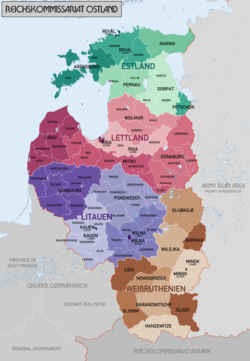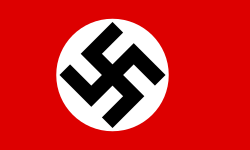| Generalbezirk Lettland Latvian: Latvijas ģenerālapgabals | |||||||||
|---|---|---|---|---|---|---|---|---|---|
| Generalbezirk of Reichskommissariat Ostland | |||||||||
| 1941–1944 | |||||||||
 Map of Generalbezirk Lettland (in shades of pink) within the Reichskommissariat Ostland | |||||||||
| Capital | Riga | ||||||||
| Government | Civil administration | ||||||||
| Generalkommissar | |||||||||
• 1941-1944 | Otto-Heinrich Drechsler | ||||||||
| SS and Police Leader | |||||||||
• 1941-1944 | Walther Schröder | ||||||||
| Historical era | World War II | ||||||||
• Established | 25 July 1941 | ||||||||
• Dissolved | 13 October 1944 | ||||||||
| |||||||||
| Today part of | |||||||||
Generalbezirk Lettland (German for "General District Latvia"; Latvian : Latvijas ģenerālapgabals) was an administrative subdivision of the Reichskommissariat Ostland of Nazi Germany that covered Latvia from 1941 to 1944. It served as the Nazi civilian administration for the German occupation of Latvia during World War II, and supervised the collaborationist Latvian Self-Administration of Oskars Dankers.
Contents
- Organization and structure
- Administrative divisions
- Civil and police leadership
- Holocaust
- Dissolution
- See also
- References
Otto-Heinrich Drechsler was the only Generalkommissar of Generalbezirk Lettland during its existence.

